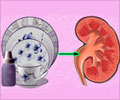The new guidelines term that levels greater than 130/80 mm Hg as high blood pressure instead of 140/90 mm Hg which was the previous benchmark.
Highlights
- High blood pressure is now defined as readings of 130 millimeters of mercury (mm Hg) and higher for the systolic BP measurement, or readings of 80 and higher for the diastolic measurement.
- A change from the old definition of 140/90 and higher, reflect complications that can occur at those lower numbers.
- The new guidelines stress the importance of using proper technique to measure blood pressure.
New Guidelines For Blood Pressure
Blood pressure categories in the new guideline are:
- Normal: Less than 120/80 mm Hg
- Elevated: Systolic between 120-129 and diastolic less than 80
- Stage 1: Systolic between 130-139 or diastolic between 80-89
- Stage 2: Systolic at least 140 or diastolic at least 90 mm Hg
The changes include:
- The guidelines eliminate the category of pre-hypertension, categorizing patients as having either Elevated (120-129 and less than 80) or Stage I hypertension (130-139 or 80-89). While previous guidelines classified 140/90 mm Hg as Stage 1 hypertension, this level is classified as Stage 2 hypertension under the new guidelines.
- Only prescribing medication for Stage I hypertension if a patient has already had a cardiovascular event such as a heart attack or stroke, or is at high risk of heart attack or stroke based on age, the presence of diabetes mellitus, chronic kidney disease or calculation of atherosclerotic risk (using the same risk calculator used in evaluating high cholesterol).
- Recognizing that many people will need two or more types of medications to control their blood pressure, and that people may take their pills more consistently if multiple medications are combined into a single pill.
- Identifying socioeconomic status and psychosocial stress as risk factors for high blood pressure that should be considered in a patient's plan of care.
- In addition, the guidelines stress the importance of using proper technique to measure blood pressure; recommend use of home blood pressure monitoring using validated devices, and highlight the value of appropriate training of health care providers to reveal "white-coat hypertension."
According to the 2017 ACC/AHA and JNC7 guidelines, the overall crude prevalence of hypertension among US adults was 45.6% and 31.9%. Antihypertensive medication was recommended for 36.2% and 34.3%. Compared to US adults recommended antihypertensive medication by JNC7, that recommended treatment by the 2017 ACC/AHA guideline but not JNC7 had higher cardiovascular disease (CVD) risk.
Overall, 103.3 (95%CI 92.7, 114.0) million US adults had hypertension according to the 2017 ACC/AHA guideline of whom 81.9 (95%CI 73.8, 90.1) million were recommended antihypertensive medication.
Compared with the JNC 7 guideline, the 2017 ACC/AHA guideline results in a substantial increase in the prevalence of hypertension but a small increase in the percentage of U.S. adults recommended antihypertensive medication.
A substantial proportion of US adults taking antihypertensive medication is recommended more intensive BP lowering under the 2017 ACC/AHA guideline.
In a corresponding analysis of the guidelines' impact, Paul Muntner, PhD, et al., suggests "the 2017 ACC/AHA hypertension guideline has the potential to increase hypertension awareness, encourage lifestyle modification and focus antihypertensive medication initiation and intensification on US adults with high CVD risk."
Reference
- Paul Muntner, Robert M. Carey, Samuel Gidding, Daniel W. Jones, Sandra J. Taler, Jackson T. Wright, Paul K. Whelton. ‘Potential U.S. Population Impact of the 2017 American College of Cardiology/American Heart Association High Blood Pressure Guideline’. Circulation (2017). https://doi.org/10.1161/CIRCULATIONAHA.117.032582.















